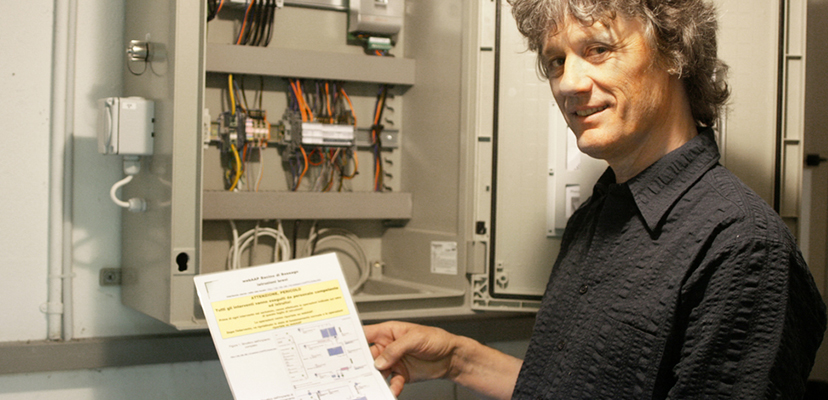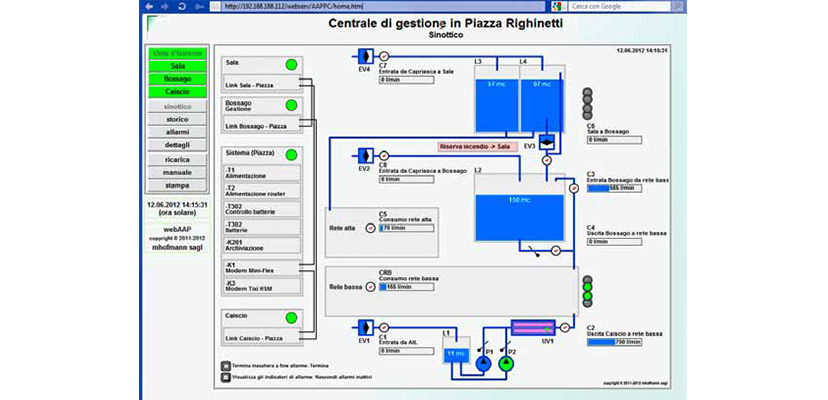


Ponte Capriasca lies a few kilometers north of Lugano. In this tranquil landscape, a new, easy-to-operate system for the water supply provides for the around 1700 inhabitants.
The entire control technology, including remote maintenance and a sophisticated alarm system, were programmed and commissioned from the ground up. The system runs on the Web server for the WAGO 750-880 Controller.
In Ponte Capriasca, the water utility is distributed across several locations. When the community wanted to modernize the system, they found their way to Mathias Hofmann, who runs his engineering office there. He describes the initial situation, “Normally, a water utility just works. If there are problems, then people are not prepared.” For that reason, it was of primary importance that the operation be user friendly and intuitive, which, according to Hofmann, most automation solutions cannot offer. “My concept was that operating the water utility should be as easy as surfing the Internet,” he explains.
Operation from the Office
The system includes two reservoirs that each feed a water supply network. Valves can be opened and closed with a click of a mouse from the office. There are two suppliers; therefore, purchases are monitored using a shopping key. How much water comes from where, and how high the respective water levels are, is graphically represented on the overview screen. Various curves show water levels and water use in real time.
The system is modularly programmed.The PLC program uses the same elements as in a control system, such as pumps, valves, or UV sterilization. The software also checks information from the sensors against each other. If, for example, one basin is being filled and therefore a throughflow is measured; however, the water level remains unchanged in the basin, a warning is sounded. This detects possible faults in the sensors.
Comprehensive Alarm System
All system messages are recorded and divided into three priority levels. If something does not run according to plan, the alarm system is used. Some alarms require an immediate response. In these cases, a text message and an email are sent to all personnel in the emergency service. The messages are designed so that as much information as possible is already obtained. Usually, one can gather from the 160 characters of the text message, where the problem is.
Web Standards Determine Control
Because the system is operated and maintained using the internet, Hofmann applied Web standards to the programming. Everything is “hard coded” and newly conceptualized from the ground up. He selected Javascript for the visualization. The graphics are sketched out by the program and are thus completely dynamic. Detailed information is separated in the Tooltips, so that they can be called when needed, but the normal view remains clearly arranged.
The decision to use Web standards brought the engineer to WAGO, “I chose the 880 Series because of the ability to network and the integrated Web server. Javascript only functions with a complete Web server, and I did not find this in any other controller.” The system is networked using existing lines. This simplified commissioning, because no additional cable had to be laid. For maintenance work, Hofmann can act as a service provider from his own office. “Thus, the solution is also economical because I don’t have to drive to the stations whenever a problem occurs somewhere.”
Investment in the Future
Hofmann spent 1.5 years developing his system. The largest portion of the work involved the communication of the individual system components and the alarm system. He has several reasons for programming such a comprehensive system, “intuitive operation on the one hand and direct access on the other. The software is suitable for a sporadic user, who has to be guided.” He sees other application areas in other communal systems, like street lighting, sewage pumps, or intersection monitoring.
Conclusion:
Text: Walter Simione, WAGO
Photo: WAGO